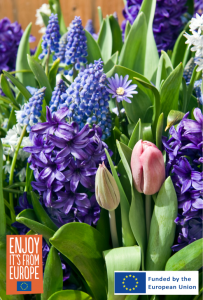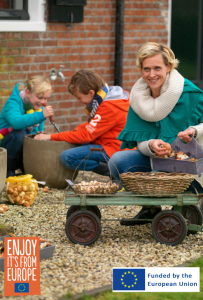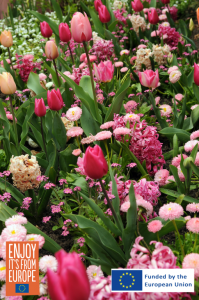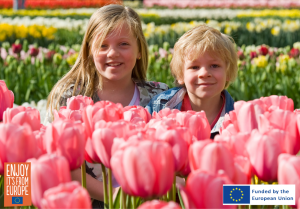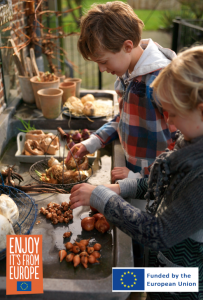Flowerbulb.eu Teaches the Simple Secrets to Planting Bulbs Like a Pro
The Joy of Growing Flower Bulbs for Beginners
PHILADELPHIA, PA, UNITED STATES, August 18, 2025 /EINPresswire.com/ -- Planting flower bulbs is like burying a hidden treasure—only instead of gold, the reward is beautiful blooms in the spring! There’s something exciting about tucking bulbs into the soil, knowing they’ll burst through the ground with vibrant color months later. It’s a simple, rewarding process that even beginners can master.New gardeners find flower bulbs the perfect way to grow. These little powerhouses—like tulips, daffodils, and hyacinths—come preloaded with everything they need to grow, so they’re basically foolproof. Just plant them once, water them, and wait for nature to work its magic. Before you know it, your garden will burst into bright colors and sweet scents with minimal effort. Even better, many bulbs come back year after year, giving a gorgeous display every spring. They’re an easy, rewarding way to build confidence and fall in love with gardening. Learn more here.
Spring-Flowering Bulbs (Plant in Fall)
Spring bloomers—like tulips, daffodils, and crocuses—need a cold period to thrive, so plant them in the fall before the first frost. The good news? If you’re shopping for bulbs in the fall, you’ll only find spring flowering bulbs, so you can’t go wrong!
Summer-Flowering Bulbs (Plant in Spring)
If you love lilies, gladiolus, or dahlias, plant these bulbs in spring for a summer display. For now, we’ll focus on fall-planted, spring-flowering bulbs.
Planting Depth
A general rule is to plant bulbs three times as deep as the bulb is tall. For instance, if a tulip bulb is two inches tall, plant it six inches deep. Always plant bulbs with the pointy end (or the bud end) facing upwards. If it doesn’t have a pointy side, plant it anyway. It will automatically grow upward.
Preparing the Soil
Bulbs love well-draining soil—they will rot in standing water. Most good garden soil is acceptable. Mix in compost or organic matter to improve drainage and fertility if the soil is heavy clay. Where possible, amending the soil is always a good idea.
Fertilizing for Healthy Blooms
For the best results, apply an organic bulb fertilizer at planting time in the fall and again after flowering in the spring. Regular fertilizers won’t cut it—bulbs have unique nutrient needs. Only use the amount suggested on the package.
Spacing for a Natural Look
Plant bulbs in groups rather than straight rows for the most beautiful display. Space bulbs according to their size; plant larger tulip and daffodil bulbs 3-6 inches apart. Smaller varieties, like snowdrops and crocus, plant 1-2 inches apart.
Watering
Water thoroughly after planting to ensure the soil has settled snugly around the bulbs. Generally, normal fall rain is enough for subsequent watering. In periods of drought, water thoroughly every two weeks.
Mulching
Add a layer of mulch after planting to help retain moisture, suppress weeds, and regulate soil temperature. When planting in a lawn, the grass will protect the bulbs.
Naturalizing Bulbs
Some bulbs, like daffodils and snowdrops, naturalize, meaning they will spread and bloom year after year. This group of bulbs can be planted under deciduous trees and shrubs (remember, they will get more sun when the leaves have fallen) and in lawns.
Growing Bulbs in Containers
When space is limited, bulbs may be grown in containers. The rule of thumb is that bulbs grown outdoors in containers must be two zones hardier than the zone they are planted in. For instance, if you are growing bulbs in containers outdoors in Zone 6, the bulbs must be hardy to Zone 4. Many people also store the pots in unheated garages and window wells to protect them from the cold.
Protecting Bulbs from Pests
If you have deer or other animals in your garden, consider planting deer-resistant bulbs or using repellents. While deer love to eat tulips, they dislike daffodils and many other spring flowering bulbs. Squirrels and chipmunks can dig up bulbs after planting. Using repellents or placing wire mesh over the soil can help if they are a nuisance.
Pro Tip: Make Planting Easier!
Attach a bulb auger to a cordless drill for super-fast digging—it’s a game-changer for planting large quantities of bulbs.
Bulbs, Corms, and Rhizomes—What’s the Difference?
While bulbs, corms, and rhizomes have slight differences, they all serve the same purpose: they store energy underground so plants can grow and bloom. Most people call them all “bulbs” and share similar planting and care instructions.
The Joy of Planting Bulbs
Growing bulbs is one of the most straightforward and most satisfying gardening projects. They require little effort, yet they reward you with an explosion of color—sometimes blooming even before the snow melts, adding months of gardening pleasure. Plus, early spring flowers provide nectar for pollinators when little else is blooming, making your garden both beautiful and eco-friendly.
Find Your Planting Zone
Spring-flowering bulbs grow best in USDA hardiness Zones 3-7. Not sure what Zone you're in? Check the USDA's interactive map at https://planthardiness.ars.usda.gov. In Zones 8 and higher, pre-cooled bulbs should be planted as annuals because the bulbs wouldn’t naturally go through a cold period.
Best Planting Time by Zone
• Zone 2 (-50 to -40°F): Early September
• Zone 3 (-40 to -30°F): Mid-September
• Zone 4 (-30 to -20°F): Late September to early October
• Zone 5 (-20 to -10°F): Late September to early October
• Zone 6 (-10 to 0°F): Mid-October
• Zone 7 (0 to 10°F): Early November
Royal Anthos is a Dutch trade organization that represents the trade companies in flower bulbs and nursery stock products worldwide. For more information, visit www.anthos.org.
Flowerbulb.eu is a promotional agency for the flower bulb sector. Their goal is to educate and inspire new and experienced gardeners. They do not sell flower bulbs; they encourage consumers to visit their local retailer. High-resolution images are available royalty-free when citing FlowerBulbs.com as the source. Visit www.flowerbulb.eu for more information.
Garden Media Group ignites buzz for clients, offers innovative public relations campaigns, and secures top media placements and partnerships. The boutique PR and marketing firm is known as the best in the home and garden, horticulture, outdoor living, and lawn and landscape industries. Its annual Garden Trends Report is among the most published trade and consumer news garden studies.
Disclaimer: Funded by the European Union. Views and opinions expressed are however those of the author(s) only and do not necessarily reflect those of the European Union or the European Research Executive Agency (REA). Neither the European Union nor the granting authority can be held responsible for them.
Peggy Anne Montgomery
Garden Media Group
+1 610-444-3040
email us here
Visit us on social media:
Instagram
Facebook
X
Legal Disclaimer:
EIN Presswire provides this news content "as is" without warranty of any kind. We do not accept any responsibility or liability for the accuracy, content, images, videos, licenses, completeness, legality, or reliability of the information contained in this article. If you have any complaints or copyright issues related to this article, kindly contact the author above.

